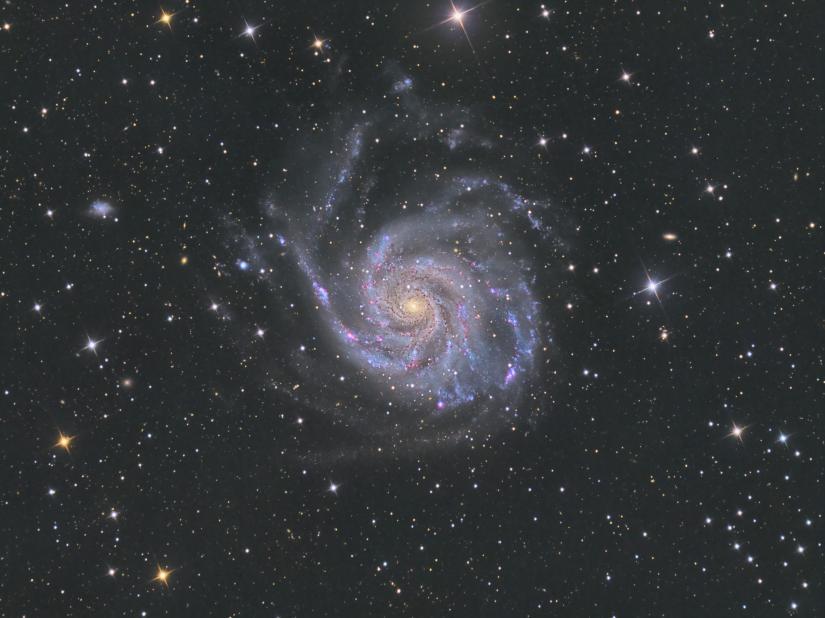Discovering the wonders of the Universe through accurate observations

Accurate and reliable observations are crucial for advancing our understanding of the universe and its celestial objects in modern astronomy. However, capturing observations of celestial objects across multiple telescope surveys poses a significant challenge. Different telescopes, operating under varying conditions, can introduce inaccuracies in measurements. Additionally, when multiple celestial objects are measured in proximity, observations can become intermingled, presenting a complex computational problem. To overcome these challenges, a team of researchers from Johns Hopkins University has developed a cutting-edge data science approach capable of matching observations from different surveys. This revolutionary tool has the potential to enhance the accuracy and reliability of astronomical catalogs, ultimately leading to deeper insights into the universe.
The challenge of matching celestial objects
In astronomy, observations from different telescopes and surveys are vital for gaining a comprehensive understanding of celestial objects. However, discrepancies in measurements and the potential for intermingled observations pose significant challenges. Traditional methods often fail to consider all possible combinations, leading to suboptimal matches with lower likelihoods. To address this challenge, the team at Johns Hopkins University sought to develop an approach that maximizes the accuracy of celestial object matching.
The sophisticated data science approach
The researchers at Johns Hopkins University devised a sophisticated data science approach to tackle the problem of celestial object matching. Their method involves assigning a "score" to each pair of observations from two separate surveys. This score represents the likelihood that the observations are of the same celestial object. The likelihood increases as the angular distance between the two observations decreases and rapidly decreases as the distance increases.
By assigning scores to each pair of observations, the researchers can effectively match observations from different surveys to maximize the combined likelihood that they correspond to the same object. This breakthrough not only dramatically speeds up the matching process but also enables the handling of vast datasets, making it invaluable for large-scale astronomical surveys.
The team at Johns Hopkins University has developed a new method that outperforms previous approaches in finding accurate matches between observations. Prior methods were fast but failed to consider all possible combinations, resulting in suboptimal matches. In contrast, the new approach guarantees both speed and accuracy by considering all possible combinations, delivering superior results when applied to real datasets. This has the potential to revolutionize celestial object matching in astronomy.
Accurate and reliable observations are crucial for our understanding of the universe. These observations form the foundation for building theories, from the smallest particles to the vast cosmos. By matching observations across time and telescopes, researchers can extract more knowledge from the same data, contributing to a deeper understanding of the cosmos.
Although the potential of this new method is evident, its broader adoption and integration into astronomical research practices will depend on further validation and consensus within the astronomy community. However, the approach developed by the researchers at Johns Hopkins University opens up exciting possibilities for improving the precision of celestial object matching in astronomy. With further enhancements, this method can handle a much larger number of surveys, extending beyond the current limit of 50 to 100 catalogs. The researchers are dedicated to refining and expanding this tool to process a broader range of datasets, making it the first exact method fast enough to be applied to real-world catalogs.
The development of this sophisticated data science approach by the researchers at Johns Hopkins University marks a significant advancement in the field of astronomy. By improving the accuracy and reliability of celestial object matching, this revolutionary tool has the potential to unlock deeper insights into the universe and its celestial bodies. Accurate observations are essential for building theories and advancing our understanding of the cosmos. As further validation and consensus are achieved within the astronomy community, this method is poised to become an indispensable asset in astronomical research practices. With its ability to handle vast datasets and deliver accurate matches, the future of celestial object matching is brighter than ever before.


 How to resolve AdBlock issue?
How to resolve AdBlock issue?